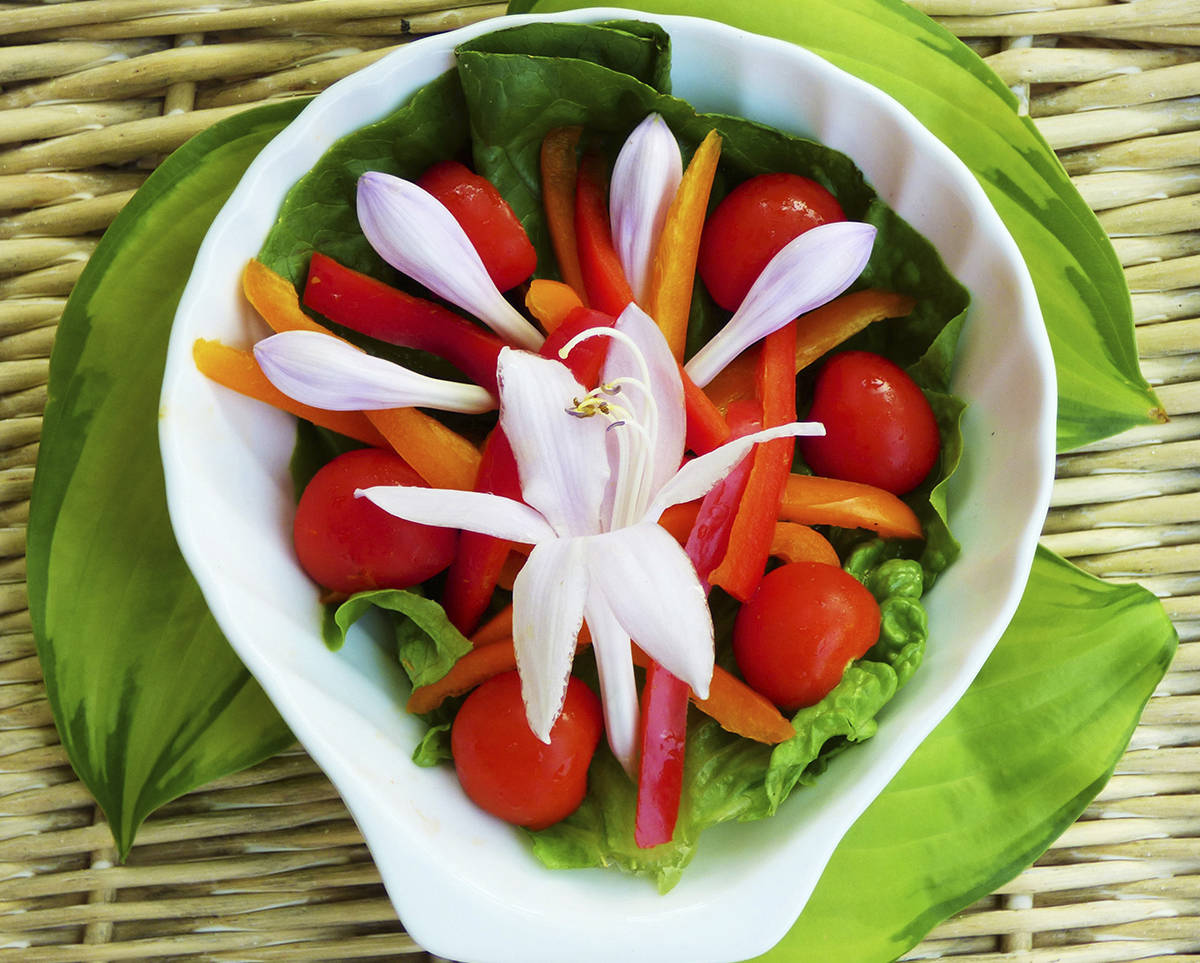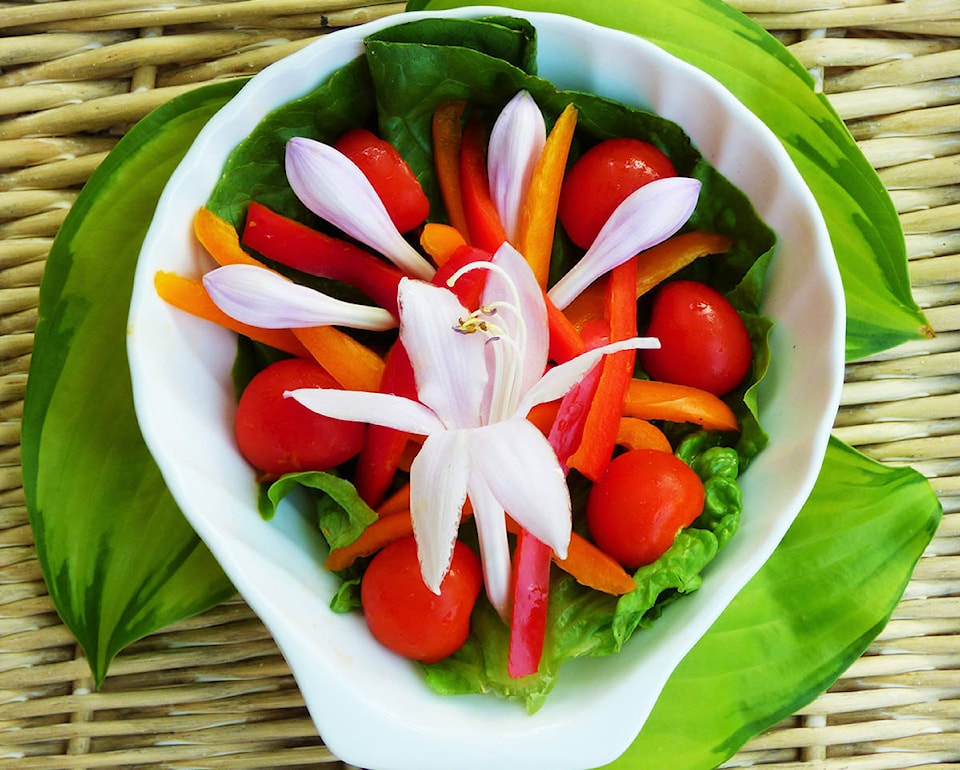Your garden is a lot like a food truck – sitting outside waiting for you to notice it, often directing it’s enticing scents to bring you within selling range but instead of the traditional aroma of gooey grilled cheese sandwiches or hot French fries.
It is the sweet perfume of Redbud (Cercis canadensis) and French lilac (Syringa vulgaris) blooms that attract us with a smell almost good enough to eat, which they are.
Actually, your garden is chock full of edible flowers, shoots and pods – many of them growing on trees, shrubs and perennials that you already have growing in your landscape.
So let’s start with the lowliest plants in your garden: the weeds.
Dandelion (Taraxacum officinale) was actually brought to North America from Europe by early settlers in the mid 1600s as both a medicinal and food plant.
The emerging leaves are delicious and make a great addition to mixed salad blends. The trick is to pick them early before they get too bitter.
Roasted dandelion root is also used as a coffee substitute and the flowers are harvested to make wine, but don’t expect either of these to entice a sophisticated wine and coffee palate.
Moving onto the perennials, where we have a lot of taste temptations that include the peppery flowers of tall phlox (Phlox paniculata) and the absolutely deliciously sweet violet (Viola odorata) blooms, which have a flavour reminiscent of its fragrance – with my favourite-tasting variety being ‘Miracle Classy Pink’.
Later in the season we can add both common (Salvia officinalis) and Russian sage (Perovskia atriplicifolia) flowers to salads, pastas or summer drinks (think Bloody Mary) for some savoury tang and many other herbs can also be used along the same lines – including thyme and rosemary.
The adventurous among you can try Fish Mint (Houttuynia cordata), which is a staple in Thai and Asian cuisine. It is usually available to us as the variegated form ‘Chameleon’ with its green, pink and yellowish-cream foliage, which tastes like a combination of orange and cilantro. Hosta flowers are another taste sensation with those of ‘Rainforest Sunrise’ being a gourmet treat – these have a honeysuckle and pea flavour.
Shrubs and vines offer a vast array of edibles from the fragrant blooms of French lilac which add a bittersweet flavour to salads to the aromatic flowers of common jasmine (Jasminum officinale), which can be infused fresh into either green or black teas.
Rugosa roses such as ‘Hansa’ are also an important food source, with the flowers making a delicious rose petal jelly and the hips often processed into jam or dried and made into tea – both of which are very high in vitamin C.
Trees round out our look at edible ornamentals with redbud, or Cercis canadensis, having flowers that taste as good as they look, followed by young seedpods that can be sautéed with a little butter.
There are two things you need to keep in mind when trying new foods from your garden: the first is to be sure that it is free from any pesticides; and the second is to be cautious and try just a miniscule portion at first, just in case you are allergic.
After that, you can stop thinking of the refrigerator and cupboards as your only source of sustenance and start using that outdoor pantry to harvest unique snacks that you can’t buy in the store.
And if you’re looking for a little inspiration in regards to what you can eat, try reading my new book, Extraordinary Ornamental Edibles, or visit my blog at mikesgardenguide.wordpress.com for food preparation ideas.
Mike Lascelle is a local
nursery manager and
gardening author
(hebe_acer@hotmail.com).

